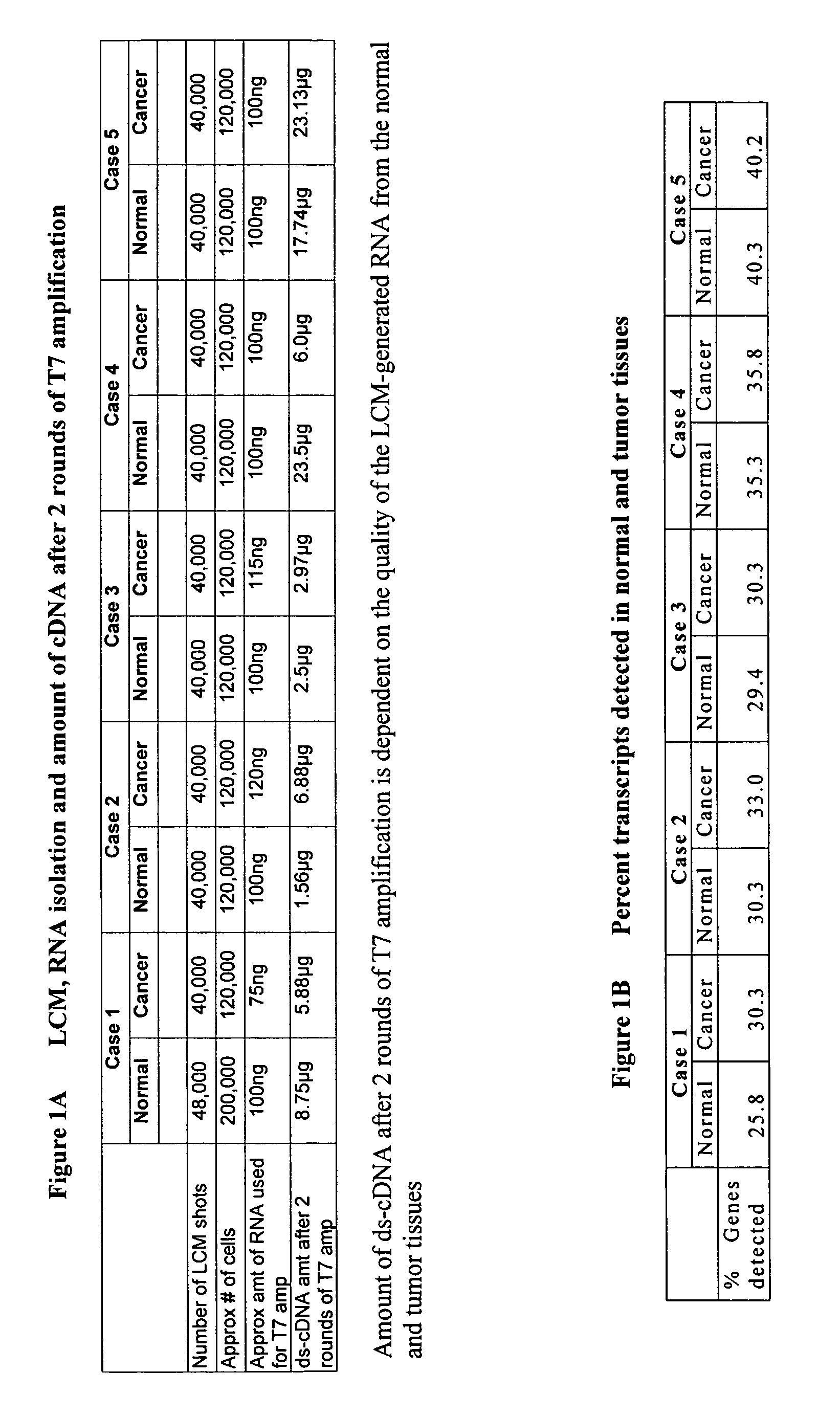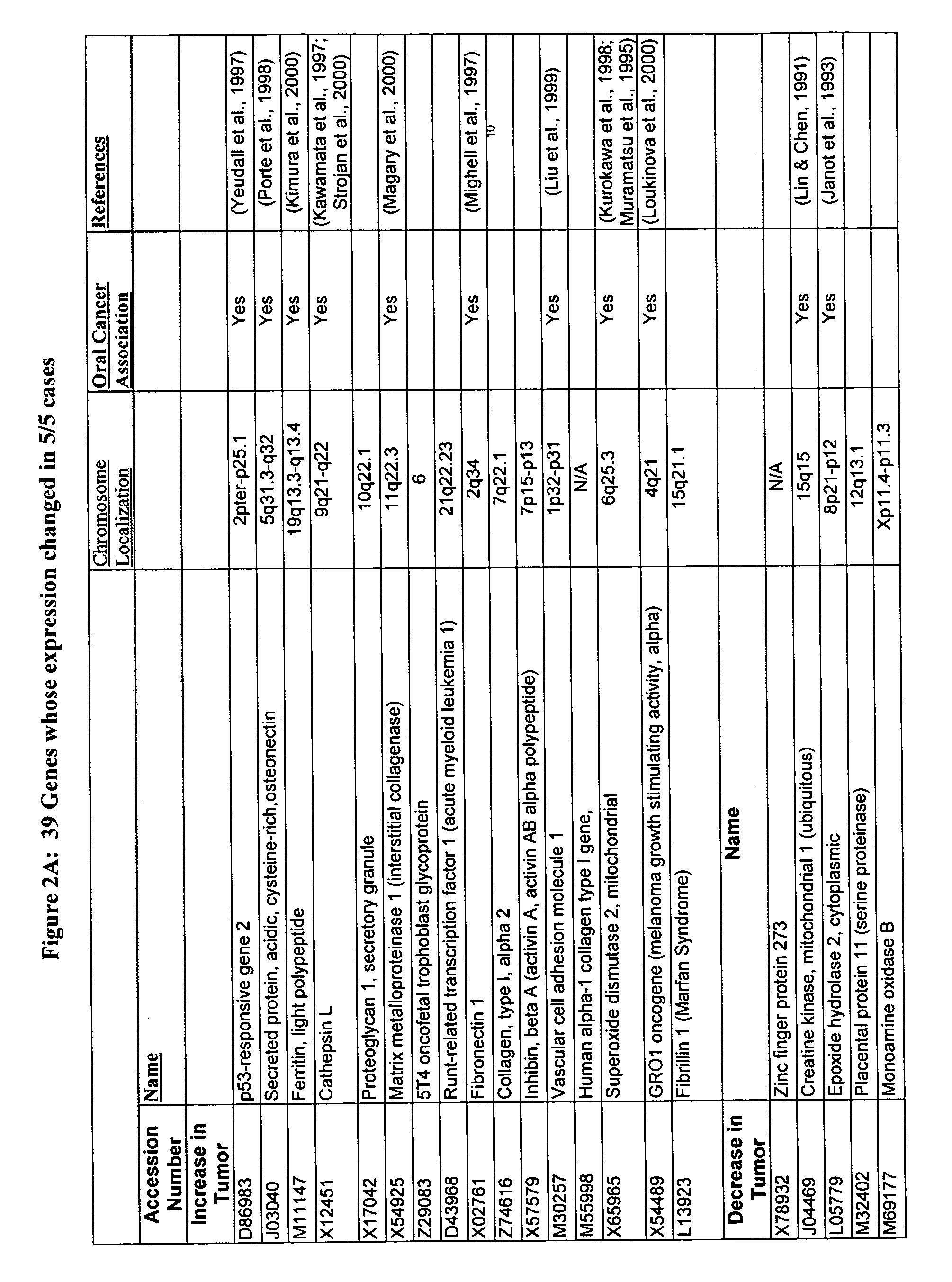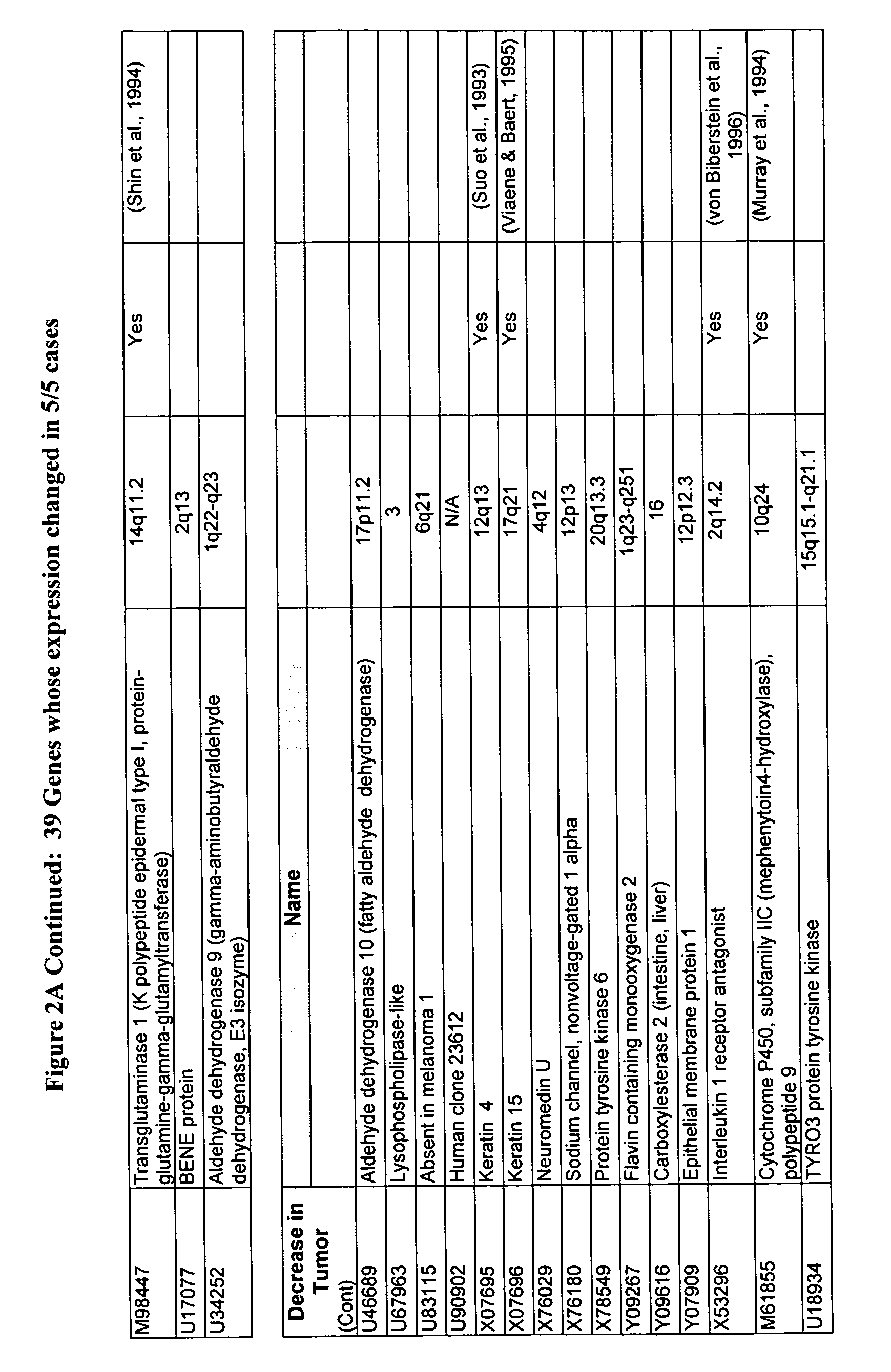Methods for detecting and diagnosing oral cancer
a technology for oral cancer and detection methods, applied in the field of methods for diagnosing and diagnosing oral cancer, can solve the problems of hampered cell-specific profiling of solid tumor gene expression
- Summary
- Abstract
- Description
- Claims
- Application Information
AI Technical Summary
Benefits of technology
Problems solved by technology
Method used
Image
Examples
example i
Preparing Nucleic Acid Samples
[0075]Tissue samples were obtained from 5 patients as described in Table 1 below. Each of patients 1–5 has a history of smoking and alcohol consumption, which are the major etiological causes of oral cancer. Each patient exhibited squamous cell carcinoma (SCC): patient 1 was moderately differentiated, patients 2 and 3 were well differentiated, patient 4 was moderately differentiated and patient 5 was moderate to poorly differentiated. Normal tissue is designated as “A” and tumor tissue is designated as “B”. the term “ppd” means packs per day and “cig” means either a cigarette or a cigar.
[0076]
TABLE 1IdentifierGenderAgeSmoking HistoryAlcohol Consumption1A, 1BF80Not KnownNot Known2A, 2BM612ppd / 15 yrs2 shots / day3A, 3BM681–2 ppd / 40 yrs3 beers / day4A, 4BM751–2 cig / day2 drinks / day5A, 5BF6040 pack / yrHeavy
[0077]Normal and tumor cells from a solid tumor site from within the oral cavity were obtained using laser capture microdissection as described in provisional ...
example ii
Analysis of Nucleic Acid Samples Using MicroArrays
[0080]The cRNA was fragmented as described by Wodicka et al. (1997) and then hybridized to Affymetrix probe arrays such as GENECHIP® Test 1, Human U95A and HuGeneFL probe arrays. Hybridization was carried out for a time period of between about 12 to 16 hours. All array washing, staining and scanning were carried out as described in the Gene Expression Manual (Affymetrix, Inc. 1999 hereby incorporated by reference in its entirety for all purposes). The Affymetrix arrays include probe sets consisting of oligonucleotides 25 bases in length. Probes are complementary to the published sequences (GENBANK®) as previously described (Lockhart et al., 1996). The sensitivity and reproducibility of the GENECHIP® probe arrays is such that RNAs present at a frequency of 1:100,000 are unambiguously detected, and detection is quantitative over more than three orders of magnitude (Redfern et al., 2000; Warrington et al., 2000). In this set of experime...
example iii
Software Analysis of Data
[0081]The data obtained from the microarrays was analyzed using various methods and software commercially available and known to those skilled in the art. These methods and software include T-test, GENECHIP® software available from Affymetrix to perform a comparison analysis; GeneCluster SOM software to perform a cluster analysis, identify genes and develop characteristics of gene expression profiles; and MATLAB™ software to identify genes that are differentiating and to identify gene classes. Additional software that can be used to analyze chip data includes GenExplore and PCA.
[0082]For GeneCluster analysis and the computation of self organizing maps (SOM), gene expression levels and geometry of nodes were input into the GeneCluster software. Before the computation of the SOM, two preprocessing steps took place. First, a filter was applied to exclude genes that did not change significantly across the pairs. Genes were eliminated if they did not show a relat...
PUM
| Property | Measurement | Unit |
|---|---|---|
| time period | aaaaa | aaaaa |
| time | aaaaa | aaaaa |
| Real Time Quantitative PCR | aaaaa | aaaaa |
Abstract
Description
Claims
Application Information
 Login to View More
Login to View More - R&D
- Intellectual Property
- Life Sciences
- Materials
- Tech Scout
- Unparalleled Data Quality
- Higher Quality Content
- 60% Fewer Hallucinations
Browse by: Latest US Patents, China's latest patents, Technical Efficacy Thesaurus, Application Domain, Technology Topic, Popular Technical Reports.
© 2025 PatSnap. All rights reserved.Legal|Privacy policy|Modern Slavery Act Transparency Statement|Sitemap|About US| Contact US: help@patsnap.com



